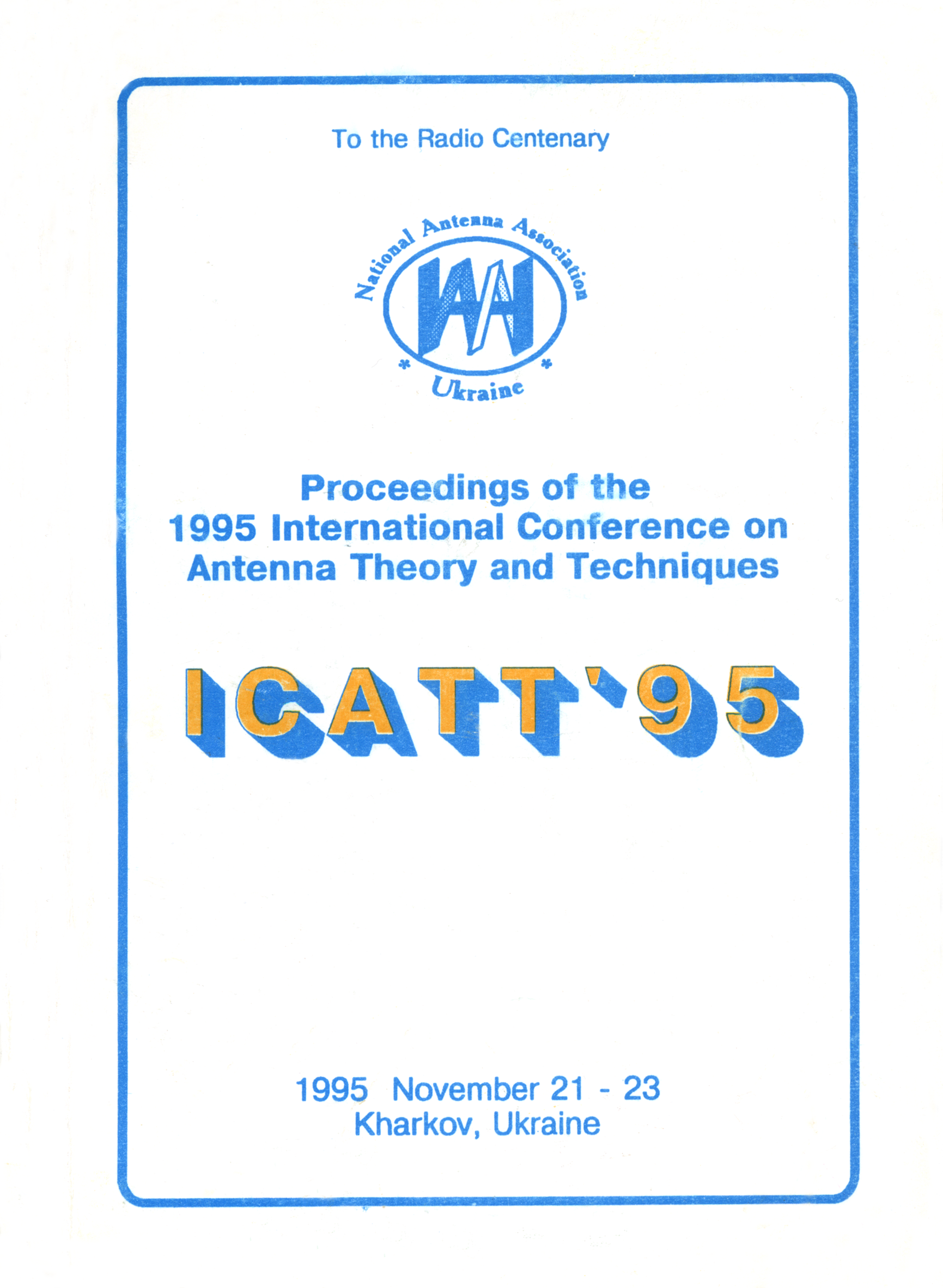Simulation of TEM horn antennas. Two dimensional case
DOI:
https://doi.org/10.1109/ICATT.1995.1234119Abstract
Two dimensional structure formed by two-cylindrical strips has been proposed as a simple model of a TEM horn antenna. An excitation by a line magnetic current has been considered and antenna characteristics, such as the radiation resistance, the far field pattern and the near field structure, have been studied in the resonant frequency band. The corresponding boundary value problem has been solved by the generalized Reimann-Hilbert Problem (R.-H.P.) approach. The problem has been solved in general formulation when restrictions on the shapes of the strip cross-sections were not imposed. The particular case of the antenna formed by cylindrical strips has been studied in detail. It is shown that high waveguide modes excited in the narrow part of the horn strongly effect on radiation characteristics of the antenna. Thus, the assumption that only TEM mode exists can lead to obtaining incorrect results especially in the resonance frequency band.
A problem of radiation of a wide-band signals has been intensively studied by many researchers and many types of antennas and antenna irradiators have been proposed.
The use of sections of transmission lines with two and more conductors, supporting TEM mode seems to be the most fruitful idea at present. The combination of so-called spherical transmission line STL with a usual parabolic mirror was offered in [1]. The case of antenna design, when the plates are located in planes of a dihedral angle is known reasonably for a long time. Such design (TEM horn antenna) was considered in [2] by the method of conformal mapping in the assumption of excitation in the antenna by the spherical TEM wave. The cases of TEM horn antenna with non-flat surfaces, forming the horns, are considered in [3],
In the present work a two-dimensional structure formed by two cylindrical screens located symmetrically concerning some plane is analyzed. The surfaces of screens are assumed perfectly conducting. The considered structure is a simplified two-dimensional model of TEM horn antenna. The assumption of infinity of screens of the antenna along the axis Z considerably simplifies the solution and makes possible to analyze in details the influence of the ends of the horn on the characteristics of the antenna radiation.
Using the boundary conditions on the surfaces of the cylindrical screens an integral equation for unknown current density function has been derived. Singling out the singular part of the integral equation kernel and using representation of functions in Fourier series we obtain dual series equations. These dual series equations have been reduced to a system of linear algebraic equation of the second kind by means of the R.-H.P. technique.
Characteristics of the two-dimensional horn antenna have been studied in detail. Particular attention has been paid to the analysis of near field structure and other antenna characteristics in the vicinity of cut off frequencies of the high order modes in the waveguide formed by the two screens.
References
Baum C.E., Radiation of Impulse-like Transient Fields, XXIII URSI General Assembly, 1990.
Lambert A., Booker S., Smith P., IEEE Trans. Antennas and Propagation, vol. AP-43, No. 1, January 1995, pp. 47-53.
Booker S., Lambert A., Smith P., Journal of Electromagnetic Waves and Applications, vol. 8, N 12, 1994, pp. 1669-1693.

